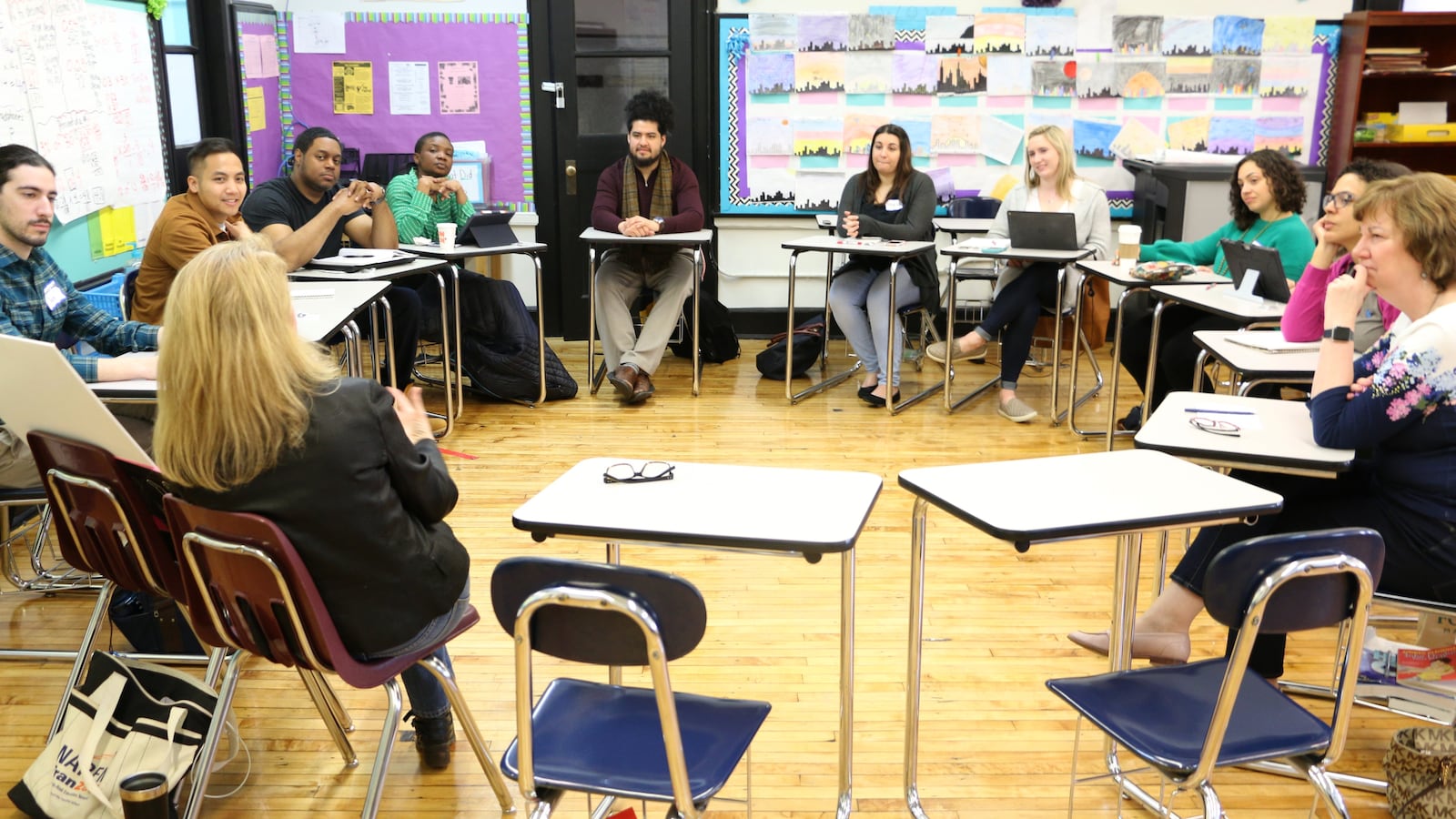With just one month before classes resume, nearly two dozen Newark schools are still racing to find teachers.
At least 23 schools currently have unfilled teaching positions, according to postings this week ahead of a district hiring fair on Saturday. Many of the schools need educators in subjects where there is a statewide teacher shortage, including bilingual education, special education, math, and science.
Summertime teacher vacancies can leave schools in a bind. Many of the most competitive teacher candidates are snatched up earlier in the year, leaving schools with fewer high-caliber prospects over the summer and the possibility of resorting to substitutes if they fail to make new hires before school starts.
“We know by data showing us that the earlier you hire teachers, the more likely they are to be of higher quality,” said the district’s former chief talent officer, Larissa Shambaugh, at a school board meeting last year. “It’s not a guarantee, but the month you hire them is in general a proxy.”
Newark has gotten creative as it tries to help schools fill their vacancies. This spring, the district launched a recruitment campaign in several far-flung cities — including Boston, Houston, and New Orleans — where officials believed many teachers were looking for jobs. It also advertised on billboards and around transportation hubs in Newark, and promised $1,000 signing bonuses to the first 100 people hired for “hard-to-fill” positions.
“We’re going really hard in our recruitment,” said Yolanda Méndez, the district’s current human resources director, at the school board’s May 21 meeting.
In late May, the district had just over 100 openings out of more than 2,700 teaching positions, Méndez said at the meeting. A district spokesperson would not say how many teaching positions remain unfilled.
Last August, the district had 95 teacher vacancies, leaving about 3% of teaching positions unfilled. The district did not say how many of those positions were still open by the time school started in September. But if the vacancy rate remained close to 3%, that would leave Newark with a higher percentage of unfilled teaching positions than 13 of the nation’s 15 largest school districts had the previous year, according to a Chalkbeat survey of data from the 2017-18 school year.
Keeping its schools fully staffed is an ongoing challenge for Newark. Between the 2015-16 and 2017-18 school years, about 18 percent of Newark educators did not return to their posts — nearly twice the statewide rate. The departing teachers may have changed districts, including by moving to local charter schools; retired; or, in a small number of cases, been fired.
That turnover forces the district to hire about 250 to 300 new teachers each year. In its search for educators, Newark must compete with wealthier communities that can offer higher pay and better-resourced schools — leaving Newark with a smaller pool of candidates than it would like.
In 2018, fewer than two educators applied for every job opening in Newark, officials said last year. The district set a goal of three applicants per opening, which officials said would allow administrators to be more selective when hiring teachers.
“That gives us more opportunities for selection and for excellence,” said Shambaugh at the January 2018 board meeting.
To expand the pool of candidates, the district launched a recruitment campaign that year called “Teach Newark.” It included a new website and social media advertisements, hiring fairs, and bonuses of up to $400 for district employees who referred candidates who were ultimately hired as teachers. In addition, district officials traveled out-of-state — including to Howard University, a historically black college in Washington, D.C. — to recruit new prospects.
Many of those efforts have continued under the district’s new superintendent, Roger León. In addition to the local and out-of-state advertisements, the district held a hiring fair in May that drew more than 200 would-be Newark teachers. The district is hosting another job fair Saturday at Central High School. While it is open to all teachers, officials have made a special push to attract educators certified to teach bilingual and special-education classes.
“One item the superintendent has been stressing is the need to make sure we’re very strategic in our recruitment efforts,” Méndez said in May.
At the same time, León is looking beyond the current pool of educators to try to grow a more diverse, homegrown teaching corps for the future.
In February, he announced a new program at East Side High School that will allow high schoolers to study and practice teaching. Launched through a partnership with Montclair State University and the American Federation of Teachers, the hope is that those students will continue studying education in college before returning to Newark Public Schools to teach.
Jennifer Robinson, executive director of Montclair State University’s Center for Pedagogy, said the new program is just one example of how the university and the district are trying to construct a pipeline that conveys new teachers into district classrooms. The university and district also partner on a long-running residency program that embeds aspiring teachers in Newark classrooms while they earn teaching master’s degrees and certificates.
“We’re trying to create a community of educators in Newark, for Newark, and with Newark,” Robinson said.

